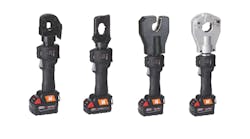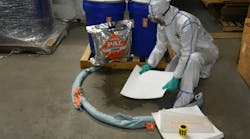Wild animals caused about 80% of the substation equipment outages at Rochester Gas and Electric (RG&E) in Rochester, New York, during the 1990s. Critters crawled under substation fences and found their way to energized equipment, knocking out power to customers.
To minimize these substation outages, RG&E turned to TransGard 15 years ago. RG&E was a beta tester for TransGard's animal-deterrent panels and conducted field trials of several prototypes.
Ten years ago, RG&E and TransGard installed electrically charged panels at 100 substations, and two years ago, they installed panels at the remaining 31 substations with exposed equipment operating at 34.5 kV or less. As a result, animal-caused outages at these substations have plummeted to one.
Installing the Panels
In advance of installing the panels, RG&E performed site-specific surveys to determine exactly what equipment should be protected, the total linear feet of panels needed, how to provide power to the panels, and the number and location of entry gates needed for substation maintenance and other work. RG&E worked with its substation maintenance employees to understand and accommodate their needs.
TransGard panels come in 3-, 6- and 10-ft lengths and are 4 ft high. To minimize the effect of wind on the panels, RG&E and TransGard installed them in a zigzag pattern. Also, the workers installed a 7-inch stone berm by the panels to prevent animal intrusions underneath the fence.
RG&E technicians completed the electrical connections for the panels, while the TransGard team performed most of the panel installation.
Maintaining the Fencing System
Alternating panels are charged, so if a person or animal makes contact with two consecutive panels, they will get a shock. The energized TransGard panels protect critical transformers, circuit breakers, bus work, insulators and capacitor banks.
To protect themselves when they maintain the substation, technicians can shut off electricity to the panels. The entry gates in the perimeter of panels, sized for one person at a time to enter, include meters that indicate when voltage in the panels goes to zero. Newer gates are solid panels that are not energized. Panels that weigh 20 lb to 30 lb each can be moved to allow vehicle access.
Updating the Fences
Two years ago, when the last of the TransGard panels were installed, RG&E completed extensive maintenance of the older panels. Technicians retrofitted several of the older installations with upgraded fence components, including some to make the entry gates more user-friendly.
RG&E is now identifying any remaining issues with the panels. As a result of continuing inspections and maintenance work, technicians have discovered broken jumper wires, especially where panels had been moved a lot. Some of the original installations had panel-to-panel connection pads that use a screw-in design, and they didn't conduct as well as they should. They have been replaced with panels redesigned by TransGard to resolve the issue. In addition, RG&E is dealing with some rusting on panels installed near major thoroughfares where they are exposed to salt spray. They are being replaced with TransGard's newer panels, which have weather-resistant coating. Technicians also have had to replace some chargers.
Over the years, RG&E installed remote alarms on about 60% of its TransGard installations to notify the utility's control center when voltage to the panels has been interrupted. In the future, RG&E would like the alarm to also monitor the status of the DC voltage on the end of the installation because, in some cases, power could be on, but a charger could have failed. TransGard introduced an AlertStrobe in early 2012 that offers this functionality.
After RG&E's success with the TransGard installations, its sister companies — New York State Electric & Gas (NYSEG) and Central Maine Power (CMP) — are also investing in the product. NYSEG has 93 installations in service and plans another 26 installations this year. CMP will be installing its first panels this year. By installing the fencing system, RG&E and other utilities are guarding against animal outages and in the process, improving customer reliability for years to come.
Gary Aman ([email protected]) is a maintenance engineering technician at RG&E, where he has worked for 31 years. For the last 15 years, he has been responsible for maintenance programs for substation transformers, regulators and lightning arresters.
Companies mentioned:
Rochester Gas & Electric | www.rge.com
TransGard | www.transgardfence.com

